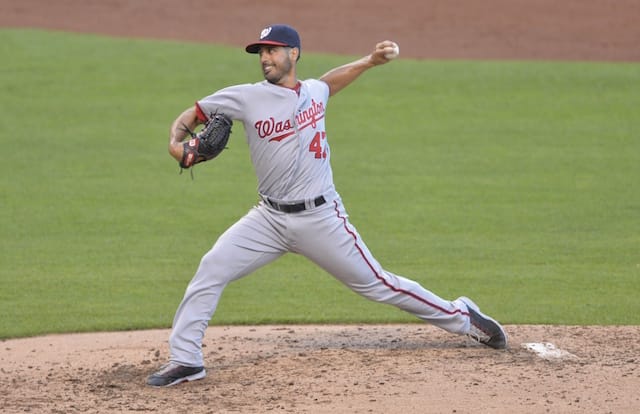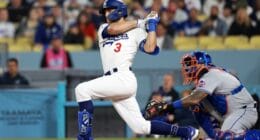After drawing a pair of right-handers the Los Angeles Dodgers face their first left-handed starter of the postseason in Game 3 of the National League Division Series. As expected, the Washington Nationals aligned their rotation so that Gio Gonzalez takes the ball in what’s now a swing game.
The Dodgers’ struggles against southpaws this season have been well documented. They finished two games below .500 in games started by a lefty. So, what are the Dodgers up against in a crucial contest in the first round of the playoffs?
Gonzalez had an up-and-down 2016 seasn and it’s hard to gauge his value. FanGraphs had him as a 2.9-win pitcher, which was good for a four-way tie for 35th in the Majors alongside Adam Wainwright, Jerad Eickhoff, and the universally-beloved Bartolo Colon.
Baseball-Reference, which uses runs scored to measure pitching value, had Gonzalez at just 0.8 WAR, which is well below average. Baseball Prospectus and their newfangled Deserved Run Average metric had him 24th in WARP, a spot ahead of teammate Stephen Strasburg.
Gonzalez made 32 starts and posted a 4.57 ERA in 177.1 innings this year. He maintained a career-best walk rate of 7.7 percent and a good strikeout rate at 22.4 percent. He did allow 19 home runs, largely due to his highest home-run-per-fly-ball rate since 2009.
But the 31-year-old generally does a good job keeping the ball down, generating 1.61 groundballs per fly ball. Gonzalez tends to pitch down in the zone, working on and off the lower edges. He’s particularly effective working down and to his glove side, where batters are hitting just .176 on pitches to that corner.
Gonzalez is also effective up in the zone, where batters are hitting roughly .200 against pitches in the upper third. As far as stuff goes, Gonzalez throws both a four-seam and two-seam fastball, a sweeping curveball and a changeup.
He throws fairly hard for a lefty, averaging 92 mph on his fastball, and has solid velocity separation on his pitches. Gonzalez pitches from a low, three-quarters arm slot and his crossfire delivery adds deception, especially against same-sided hitters.
Opposing batters hit .271 off Gonzalez’s four-seamer and .314 against his two-seamer this year, according to Statcast. However, he limited opposing batters to a measly .188 average on his curveball.
Gonzalez got nearly as many whiffs on his curveball (93) as his four-seamer (101) despite throwing 526 fewer curves. He uses his changeup sparingly as a weapon to keep right-handed batters honest.
How do the Dodgers go about attacking the Nationals’ lefty?
The most effective approach would be hunting fastballs early in the count and laying off Gonzalez’s curveball, which is his best pitch. While he does get a lot of groundballs, hitters need to focus on dropping the bat head and lifting pitches, especially four-seamers, on which he allowed 10 homers this season.
The Dodgers also can’t afford to expand the zone. Gonzalez loves working off the corners and is very effective when hitters get overly aggressive and chase balls off the plate. His curveball has a ton of movement and batters will need to identify it early so they don’t go fishing.
A final note: Gonzalez hasn’t pitched well, or at all, of late. In his last three starts of the season, he allowed 12 runs in 13 innings. His last outing, a 3.2-inning start, was on Sept. 28, which means Gonzalez hasn’t taken the mound in nearly two weeks.
Dodgers hitters should be able to tell fairly early on if he needs to shake off rust or if he’s simply well-rested. If Gonzalez’s curveball is working, the Dodgers are going to be in for a long night. But if they’re aggressive against fastballs in the zone, this game could be the combo-breaker they need for postseason success.





